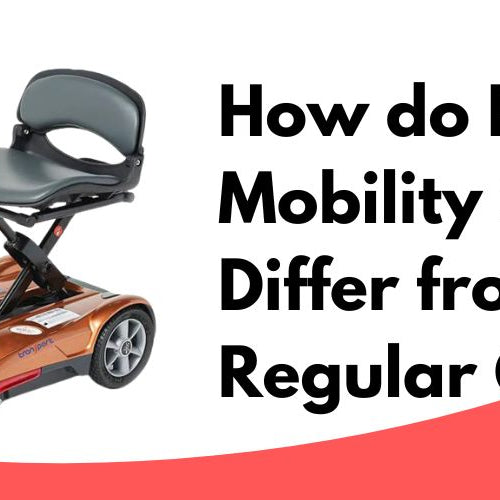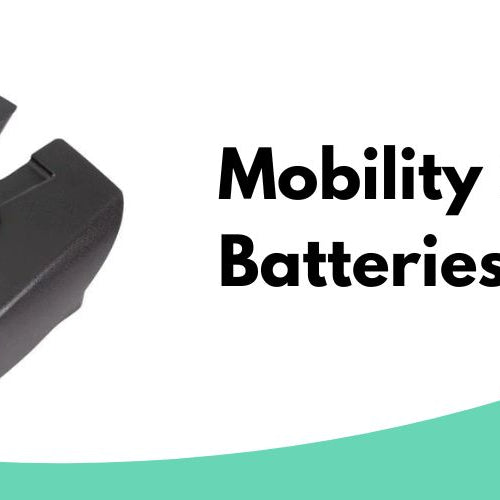Mobility scooters have become a true lifesaver for countless individuals with limited mobility, granting them the opportunity to regain independence and easily navigate through their day-to-day lives. However, when a mobility scooter's battery dies unexpectedly, it can cause a myriad of issues, potentially leaving people stranded at inopportune moments. To avoid these stressful situations, it's crucial to understand the factors that contribute to battery failure, as well as the steps one can take to prolong their battery life and stay mobile. These tips comes from Mobility Nest.
A mobility scooter relies heavily on battery power to operate, so knowing the signs of a dying battery or how to properly maintain it is essential for scooter users. Just like any other rechargeable battery, a mobility scooter battery has a limited lifespan. On average, these batteries might last two to three years before needing replacement, but the actual duration depends on factors such as usage, charging habits, and battery quality. Some common indicators that the battery may be nearing the end of its life include diminished performance, decreased travel range, and longer charging times.
As a mobility scooter owner, staying proactive about battery care can make a significant difference in extending your battery life. Regular charging, proper storage, and routine inspections can enhance the longevity of your mobility scooter battery, helping you avoid the frustrating experience of being stranded with a dead battery. Equipped with this information, mobility scooter users can better prepare themselves for any potential battery-related issues, ensuring a smooth and uninterrupted ride.
Understanding Mobility Scooter Batteries
Mobility scooters are essential for many people to maintain their independence and navigate their environment with ease. One critical component of mobility scooters is the battery, which supplies the necessary power to operate the scooter. In this section, we will discuss the different types of batteries, their life expectancy, and some factors that can affect their performance.
Types of Batteries
There are two main types of batteries commonly used in mobility scooters: sealed lead-acid (SLA) batteries and lithium-ion (Li-ion) batteries.
-
Sealed Lead-Acid (SLA) batteries - SLA batteries are less expensive and widely used for mobility scooters. They are robust and can handle deep cycling well. However, they are heavier and may require more maintenance than lithium-ion batteries.
-
Lithium-ion (Li-ion) batteries - Li-ion batteries are lightweight and have a higher energy density, allowing them to store more power in a smaller, lighter package. They also have a longer lifespan and charge faster than SLA batteries. However, they are more expensive and can be sensitive to temperature fluctuations.
Battery Life Expectancy
The life expectancy of a mobility scooter battery depends on several factors, including the type of battery, usage habits, and proper maintenance.
-
Sealed Lead-Acid (SLA) batteries typically last between 12 to 18 months, with proper care and maintenance. However, their lifespan can be shortened if they are not charged correctly or exposed to extreme temperatures.
-
Lithium-ion (Li-ion) batteries generally have a longer lifespan, lasting anywhere from 2 to 5 years, depending on usage and care. Some factors that can affect a Li-ion battery's life expectancy include the frequency of use, charging habits, and exposure to extreme temperatures.
To maximize the life of your mobility scooter battery, follow these tips:
- Regularly charge the battery according to the manufacturer's recommendations.
- Store the scooter in a dry, cool place to avoid exposure to extreme temperatures.
- Keep connections clean and well-maintained to ensure optimal performance.
- Avoid overloading the scooter, as this can cause strain on the battery and shorten its life.
Remember that mobility scooter batteries will naturally lose their ability to hold a charge over time. It is crucial to closely monitor your battery's performance and replace it when it no longer provides adequate power to meet your needs.
Signs of a Dead Battery
Symptoms
A dead battery in a mobility scooter can create various issues. The most common signs include:
- The scooter won't start or struggles to start
- Reduced travel range despite a full charge
- The scooter moves at a slower speed than usual
- The battery charge indicator shows an abnormal reading
These symptoms together indicate that the battery might be dead and may need replacement or repair.
Testing Methods
To confirm if your mobility scooter battery is dead, you can perform the following tests:
1. Visual Inspection:
Check the battery terminals for corrosion, which can indicate battery damage or weakness. Clean and tighten terminals if corrosion is present.
2. Load Testing:
Perform a load test to measure the battery's ability to provide consistent power under load conditions. You can use a digital voltmeter or battery tester to measure the voltage drop during operation.
- Fully charge the mobility scooter battery.
- Turn on the mobility scooter and apply a load (this can be done by operating it or using a load resistor or device).
- Measure the battery's voltage after a few minutes. If it drops significantly below 12V (for 12V batteries) or 24V (for 24V batteries), the battery might be dead.
3. Specific Gravity Test:
This test requires a hydrometer and is suitable for checking the condition of lead-acid batteries. To perform the test, follow these steps:
- Remove the caps from each battery cell.
- Draw a sample of electrolyte using the hydrometer and note the specific gravity reading.
- Repeat the process for each cell.
- Compare the readings with the recommended values provided by the manufacturer.
- If the specific gravity reading is significantly lower in most or all of the cells, the battery is likely dead.
By following these testing methods, you can identify if your mobility scooter battery is dead and needs to be replaced or repaired. Remember to practice safety precautions and consult an expert if unsure about any steps.
Handling a Dead Mobility Scooter Battery
Immediate Steps
When faced with a dead mobility scooter battery, the first step is to stay calm and assess the situation. Check for any visible damage or loose wiring that may be causing the issue. If possible, move the scooter to a safe and secure location to work on it.
Next, make sure the mobility scooter is turned off before attempting any troubleshooting. Consult the user manual for troubleshooting tips unique to your scooter's make and model. In some cases, a simple reset or fuse replacement can revive the dead battery.
Long-Term Solutions
For a more permanent fix, consider purchasing a high-quality replacement battery. Look for a battery that is compatible with your scooter and meets or exceeds the original specifications. Regular maintenance can also help extend battery life. This includes:
- Charging the battery regularly: Avoid letting it get too low, as this can reduce its lifespan.
- Storing the scooter in a temperate environment: Extreme heat or cold can affect battery performance.
- Keeping connections clean: Dirty terminals can create poor connections, which can lead to decreased battery performance.
Another long-term solution is investing in a quality battery charger. A smart charger can help maintain the battery charge, ensuring it is ready when you need it. Additionally, chargers with automatic shut-off functionality can prevent overcharging, which can also damage the battery.
Regular servicing of your mobility scooter will help identify potential battery issues early, allowing you to take preventive measures and minimize the risk of getting stranded with a dead battery. Maintain a schedule of regular check-ups and stick to the manufacturer's recommended maintenance routine.
Remember to always prioritize safety and follow the manufacturer's guidelines when caring for your mobility scooter battery. Proper care and attention can help ensure you have a reliable source of power for your scooter and can travel with confidence.
Maintenance Tips to Prevent Battery Death
Regular Inspection
One important maintenance tip to prevent mobility scooter battery death is having a regular inspection schedule. Inspecting the battery frequently can help to identify any physical risks, such as loose connectors or corrosion on the terminals. Additionally, a regular visual and hands-on inspection can provide insights into the battery's overall health and catch any problems before they become a bigger issue.
It's important to clear away dirt, dust, and corrosion from the battery terminals during these inspections. Keeping the terminals clean can ensure a good connection and prevent power loss or battery failure.
Charging Practices
Practicing proper charging habits is essential for maintaining and extending the life of a mobility scooter battery. Several tips for appropriate charging practices include:
- Always use the manufacturer's recommended charger.
- Ensure the battery is fully charged before first use.
- Do not overcharge the battery, as this can damage the capacity and shorten its life.
- Avoid deep discharging, or allowing the battery to drain completely.
- Recharge the battery after every use, even if it is not completely drained.
By following these charging practices, users can help to prolong the battery life and prevent unexpected failures.
Storage and Handling
Proper storage and handling are crucial factors in preventing battery death in mobility scooters. Here are some essential guidelines to follow:
- Store the battery in a cool, dry, and well-ventilated area.
- Avoid exposure to extreme temperatures or temperature fluctuations.
- Disconnect the battery when not in use for extended periods.
- Do not place any heavy items on the battery, as this can damage the casing.
Implementing these storage and handling practices can contribute to a healthier battery, ensuring that it remains functional and reliable for a longer period.






Leave a comment